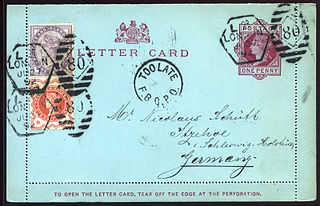
A piece of postal stationery is a stationery item, such as a stamped envelope, letter sheet, postal card, lettercard, aerogram or wrapper, with an imprinted stamp or inscription indicating that a specific rate of postage or related service has been prepaid. It does not, however, include any postcard without a pre-printed stamp, and it is different from freepost for preprinted cards issued by businesses. In general, postal stationery is handled similarly to postage stamps; sold from post offices either at the face value of the printed postage or, more likely, with a surcharge to cover the additional cost of the stationery. It can take the form of an official mail issue produced only for the use of government departments.
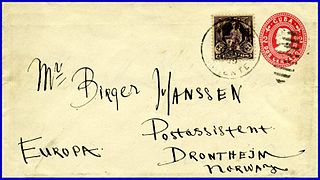
A stamped envelope or postal stationery envelope (PSE) is an envelope with a printed or embossed indicium indicating the prepayment of postage. It is a form of postal stationery.

The Gibraltar Study Circle is a global non-profit society based in the United Kingdom, founded by Walter (Wally) Jackson in 1975. Its aim is to expand the knowledge of the philately of Gibraltar, a British overseas territory located at the entrance to the Mediterranean Sea overlooking the Strait of Gibraltar. The study circle looks at the philately of Gibraltar in all its forms for the benefit of collectors (philatelists) from all walks of life. This includes studying the postal history, postage stamps, revenue stamps, postal stationery and associated overprints from Gibraltar and any of these used in Morocco. Any new information is shared with the membership via its quarterly journal, "The Rock", which has been published since 1975, showing articles of interest not only to philatelists but also historians, artists and sociologists.

The Tapling Collection of postage stamps was donated to the British Museum from the estate of Thomas Tapling in 1891.
The Universal Postal Union Collection is a deposit by the General Post Office (GPO) in the United Kingdom, under section 4 of the Public Records Act, of its duplicate Universal Postal Union collection of 93,448 stamps, covering the period from 1908.
The Foreign and Commonwealth Office Collection was formed by instruction from the Secretary of State for the Colonies on 23 April 1890 to all territories under his authority. The intention was to have a record of all Colonial Postage and revenue stamps, postcards, embossed envelopes and newspaper wrappers. The collection contains single examples of the stamps in use at that time as well as some obsolete issues and single copies, usually from first printings, from 1890. Variations such as colour varieties and alternate watermarked papers are included.
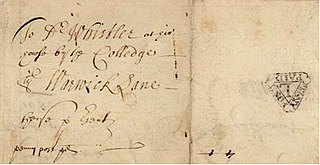
The Fletcher Collection is Hugh Greenwell Fletcher's lifetime philatelic collection of British postage stamps and British stamps used abroad including overprints and non-stamp items such as postal stationery. On his death in 1968, the collection was bequeathed to the Bruce Castle Museum in Tottenham, once the home of Sir Rowland Hill. The collection was donated to the British Library in 1989.

The Sherborn Library is a municipal public library in Sherborn, Massachusetts, United States. Many libraries have existed in the town, beginning with one book collection set up by the Social Circle in 1808. Theodore Dorr combined several book collections to form one central library in 1860. In 1914, a benefactor named William Bradford Homer Dowse built a brick building that would become the Sherborn Library in January 1971. Today, the library is used frequently by the residents of Sherborn, and is open every day except Sunday.
The Bailey Collection is a collection of philatelic material relating to the Spanish Civil War that forms part of the British Library Philatelic Collections. The collection was donated to the Library by the Spanish Study Circle in 2007.
The Burnett Collection is a collection of Hyderabad stamps, postal stationery, and postal history material formed by A.H. Burnett and given to the British Library by his sons A.D. and R.G. Burnett in 1991. It forms part of the British Library Philatelic Collections.
The Chismon Collection is a collection of Croatian philatelic material formed by Harvey John Chismon and given to the British Library by his son Joseph Chismon in 2009. It forms part of the British Library Philatelic Collections.
The Shelley Collection is a collection of philatelic material relating to the Spanish Civil War that forms part of the British Library Philatelic Collections.
The Walker Collection is a collection of philatelic material relating to the Second World War German occupation issues of the Channel Islands that forms part of the British Library Philatelic Collections. The collection is mainly of Guernsey material. It was formed by G.L. Walker and donated to the British Museum in 1948.

The Row Collection is a collection of philatelic material relating to Siam that forms part of the British Library Philatelic Collections. The collection covers the period 1883 to 1918 in 22 volumes. It is mainly of unused material with many blocks, and strong in the various provisional surcharges. It also includes some postal stationery and issues used in Kedah and Kelantan. It was formed by Harold Row and presented to the British Museum in 1919 by Row's mother, Mrs Eliza Row.
The Postal Authority Pre-Issue Publicity Collection is a collection of leaflets, press releases and other pre-issue publicity material from postal authorities for world new issues from the 1960s to 2000. It forms part of the British Library Philatelic Collections. As of January 2009, the collection was held in six stock books, 23 albums, and nine file boxes.
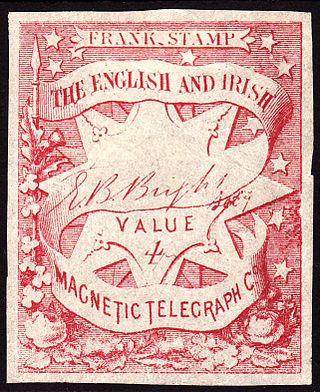
The Langmead Collection is a collection of British and Irish telegraph stamps and stationery from 1851 to 1881 that forms part of the British Library Philatelic Collections. It was formed by Peter Langmead and received by the Library under the "in lieu of tax" scheme in 1991.
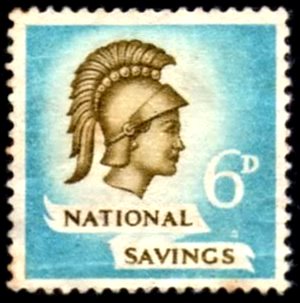
The H.M. Stationery Office Collection is a collection of British excise revenue material including National Savings and National Insurance stamps that forms part of the British Library Philatelic Collections. It was received from H.M.S.O. between 1982 and 1992.
The Kaluski Collection is a collection of stamps of Poland that forms part of the British Library Philatelic Collections. It was formed by Janusz Kaluski and donated to the library in 2003 and includes 46 volumes detailing the stamps and postal history material of Poland from 1835 to 2002.
Richard Williams Harold Row was a philatelist who was one of the "Fathers of Philately" entered on the Roll of Distinguished Philatelists in 1921.









